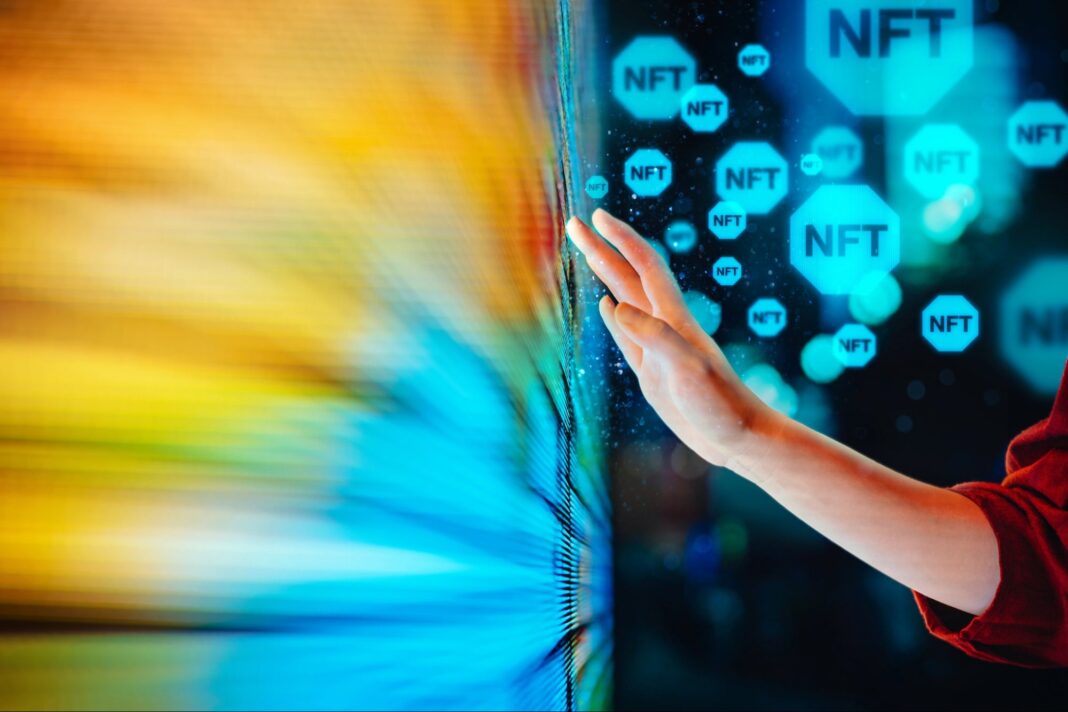Opinions expressed by Entrepreneur contributors are their own.
In the last crypto industry bull run, we saw growing curiosity and experimentation from major financial institutions, a surge in numerous altcoins (non-Bitcoin cryptocurrencies) that are now ecosystem staples, major DeFi (decentralized finance) developments, positive regulatory actions, and of course, Bitcoin’s value reaching an all-time high. But in that whirlwind period, we can’t forget the unparalleled hype and interest surrounding something called non-fungible tokens, or NFTs.
For those who were absent, NFTs are a unique digital identifier recorded on the blockchain to certify ownership and authenticity of an asset—often, but not exclusively, a digital piece of art. NFTs rode the bull market wave to prominence with numerous high-profile digital art collections like the Bored Ape Yacht Club and CryptoPunks becoming iconic cultural phenomena, consistently fetching upwards of six figures a piece in the process.
One NFT, “Everydays: The First 5000 Days” by Beeple, sold for an astounding $69 million in March 2021. Before the NFT bubble popped, the NFT market rose to $41 billion in 2021, approaching the conventional art market’s valuation of around $50 billion in 2020.
Related: What Is NFT Art? Everything You Need To Know
A fall from grace
But the NFT market crashed hard as the crypto industry suffered from ever-frequent scams, hacks, and high-profile exchange collapses. These scandals, which were typically the result of criminal intent, negligence, or poor risk management, stained the industry to the point that it delegitimized blockchain technology entirely.
The scandals forced the industry to acknowledge and address its flaws. As a consequence, many saw NFTs as the poster child of crypto’s problems: Built on hype, seedy, and lacking utility.
As the price of Bitcoin and most other altcoins plummeted, NFTs were singled out as just another blockchain-enabled scam. NFT buyers were mocked relentlessly on social media as some demonstrated how they could simply hover over any NFT image listed on a marketplace and then “right click, save as.” Perceived ownership be damned. Meanwhile, the prices of their expensive digital art were freefalling harder than Bitcoin and Ethereum.
NFT or “play2earn” gaming, another brainchild of the last bull market, also suffered greatly despite claiming to provide actual use cases by integrating digital assets into gameplay. Critics of the NFT gaming sector widely described these games as underdeveloped, uninteresting, unplayable, and unsustainable business models. Some even went as far as to call the games centers of undercover gambling.
As the crypto industry underwent a cleanse that aimed to weed out scams, provide real-world utility, align with regulators, and emphasize product over hype, we began to see an industry on the mend. With prices gradually rising and other positive industry developments taking shape, NFTs have been quietly excluded from many of these conversations until now.
Related: Why Another Bitcoin Boom Could Be the Key to Institutional Adoption. Should You Buy In?
NFTs: Back with a vengeance?
The tea leaf readings are consistently trending toward an inevitable crypto bull run. Citing the recent SEC ruling to approve spot Bitcoin ETFs from 11 firms, including BlackRock, and the much-anticipated Bitcoin halving event in April, crypto enthusiasts are finally hoping for an end to the debilitating crypto winter.
The overall crypto industry positivity bodes well for a depleted NFT market as the two sectors are intrinsically linked, with the latter being more dependent on the former. A stronger, more financially robust crypto economy means there is more capital to spend on NFTs, which still enjoy a loud and loyal community despite their downtrodden standing.
But this time, an NFT revival isn’t solely dependent on the crypto industry’s wellbeing. Momentum has been building over the last couple of months, showing that interest in NFTs remains, with several vital shifts driving this renewed interest.
Both macro and micro-trends within the NFT space could propel them back into the mainstream but with a more mature flavor. On a macro level, we are seeing a shift from expensive, small-quantity NFT “members clubs” to more affordable assets produced in larger quantities and a greater focus on direct value creation over speculation — a common past critique of NFTs that limited their accessibility. Furthermore, major brands like Nike and Starbucks are experimenting with mass-market NFTs as a way to build and grow brand loyalty through digital collectibles.
On a more micro level, the buzz around generative AI-created art provides a tool for developers to experiment and produce innovative and unique NFTs. For example, AI blockchain infrastructure startup ChainGPT has a user-friendly NFT generator that completely automates the entire generating and minting process, reducing the chance of a verification error or another mistake associated with manual NFT creation from occurring.
Aside from AI, though, we can expect to see other exciting and innovative use cases for NFTs that go beyond what we’ve witnessed so far. This is already playing out in the fashion industry, where NFTs serve as proof of authenticity for luxury goods, and in the music industry, where it’s becoming commonplace for artists to tokenize royalties of songs as NFTs.
Just as the broader crypto industry matured during the down market, the same can be said for NFTs. With new projects, new use cases, and the power of AI, NFTs will likely play an impactful yet more modest role within a stronger and more stable crypto industry. While they may not be as prominent or as hyped, they will serve as a gateway to the world of digital assets for many simply by exposing them to the concept of digital ownership.
